New, used, well-used, or vintage?
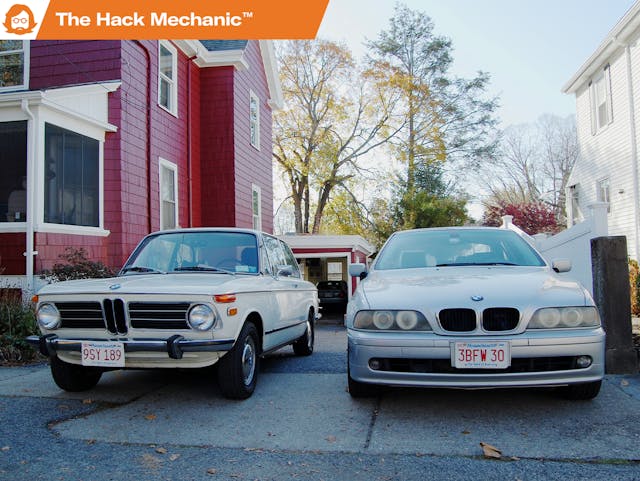
My sister and I drove down to Long Island (New York) last week to see an old friend. While I normally wouldn’t have qualms about taking my generally well-sorted 220,000-mile 2003 BMW 530i stick sport, the car recently developed a quirk where, in cold weather, it misfires during start-up and warm-up. The Check Engine light usually clears simply by restarting the engine, but I wouldn’t want to be in a situation where it keeps misfiring and I knowingly drove the car that way hundreds of miles, as the unburnt fuel is bad for the cylinder walls and the catalytic converter. I haven’t yet had the chance to swap out whichever stick coil is bad, and my wife needed her 2014 Honda Fit, so I asked my sister if we could take her car, a 120K-mile 2012 Honda Civic.
Now, my sister is about the kindest person on the planet and would never even consider a retort such as “What, none of Mr. Hack Mechanic’s fleet of cars will make the trip?” My readers, of course, might not all be so genteel. Even our old friend on Long Island quipped, when we pulled up in the Civic, “Why didn’t you drive one of your fun cars?” So, before I get peppered with barbs from the peanut gallery, I thought I’d write something that’s been banging around in the mental bin for a while about the tradeoffs between driving new, used, well-used, and vintage cars.
New Cars: When you buy a new car, you’re paying for technology, safety, smoothness, quiet, and other things, but for many people, the primary reason for the purchase is the peace of mind generated by reliability that comes with newness. Maybe the repair bills on their old ride convinced them that it was time. Or worse, maybe the car died on them, and the whole aura of trust was punctured. Whatever the reason, buying a new car is a massive exercise in choice—propulsion (gas, electric, or hybrid), body style, make, model, options, and financing. Plus, of course, these days fewer and fewer people actually buy new cars. Many folks lease, in which case you’re paying for “ownership experience”—manufacturers want you to have a trouble-free four years and 48,000 miles, turn the car in at the end, and then lease something else from them. If you can afford this, there’s nothing wrong with it, but between the purchase, the sales tax, the monthly payments, the insurance, and depending on the state you live in, the annual excise taxes, new cars are bloody expensive.
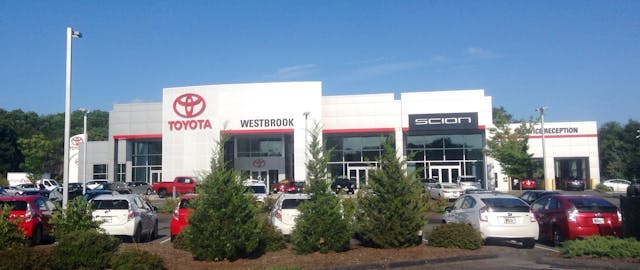
Lightly Used Cars: Of course, really, I’m the last person who should be saying anything about new cars, as I’ve never bought one. For my wife and family, I had a series of quasi-responsible five-ish-year-old 60K-ish mileage cars that I sold when they got too needy, or began rusting, or I saw desirable safety features like ABS becoming attainable in the used market. But when my wife began driving more for her business, I did the responsible thing and bought something much newer—a two-year-old 2014 Honda Fit with 7K miles on the odometer, well-priced due to a rebuilt title (a curb strike that dragged along the floor pan was enough to total it). Seven years later, the Honda has been everything it was supposed to be—I’ve done nothing to it other than oil, tires, brake pads, and a battery. It now has 70K on it, which makes it due for a timing belt. The Fit’s rebuilt title notwithstanding, in general, when people talk about buying used cars, this is the kind of thing they usually want—something where the previous owner has paid for the depreciation, but the car is still in the sweet spot of not needing money thrown at it regularly.
I’ve written multiple articles about what I call “The Big Seven” things likely to strand a car (fuel delivery issues, ignition issues, cooling system issues, charging system issues, belts, clutch hydraulics, and ball joints). I originally meant it to refer to vintage cars, but the first five apply equally well to modern daily drivers. A car may not need attention in any of these areas within the first 100,000 miles—like our Honda Fit, it may need nothing more than oil, tires, brake pads, and a battery. But eventually parts in these five systems start to go, and when they do, they cause a running car to wind up dead in the breakdown lane, which is no fun at all. I’ve written about how one would think you can address this proactively by replacing parts like the fuel pump, water pump, and alternator before they break, and how that’s challenging because of the declining quality of many OE, OEM, and aftermarket parts these days—that is, you might well be removing a perfectly-functioning high-quality part and replacing it with something inferior. Even if the car never strands you and instead you’re gobsmacked by a couple of thousand-dollar repair bills for brakes, shocks, and exhaust, selling a car when it reaches this point is not an unreasonable decision for most people.
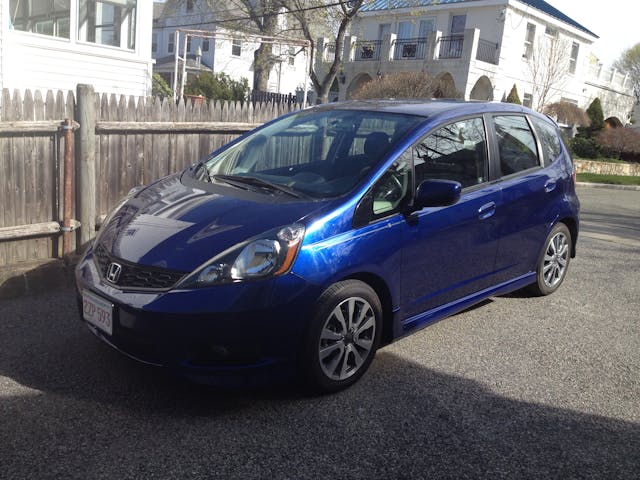
Well-Used Cars: As far as what I drive, everything automotive I’ve done for the last 40 years has been enabled by a) having a short commute that allowed me to drive back and forth to work in just about anything that started and lumbered under its own power, and b) being able to fix it when it broke or was about to. I can count on one hand the number of times I’ve had to paid someone to fix one of my cars. OK, maybe on seven fingers. This in turn allowed me to buy cars that would’ve normally been outside the envelope of what I could afford but were within my grasp because they needed work and I could fix them. Over the years, this morphed into owning multiple interesting cars. I mean, why have just one cool-but-needy car when you can have two or three or five or eight or 13?
This takes us into a vehicle category that’s distinct from the lightly-used cars I was buying for the family. The cars I’ve generally bought for myself to daily drive have been closer to “used up” than merely “used”—cars that are cheap because they have 150,000–200,000 miles or more and are in immediate need of repair either to be roadworthy or to pass inspection or both. The 2003 BMW 530i I bought nearly eight years ago and am still daily driving is a perfect example. It had reportedly been sitting for a year and a half because it wouldn’t crank with a jump-start. The seller thought it either needed a starter or had some electrical issue, but I came down with a fully-charged battery, dropped it in, and the car started and ran fine. The Check Engine Light was on, but this turned out to be due to a small rotted section of rubber evaporative control line. Of course, the car did have 180,000 miles on it and needed brakes from sitting. And when you buy a car with that kind of mileage, if you don’t know its repair history, you ignore the first five of “The Big Seven” at your peril. And, of course, on high-mileage cars, there’s the usual cavalcade of bad CV joints, burned-out cooling fans, broken window regulators, on and on. I was a bit slower on the uptake than I should’ve been—a dying fuel pump nearly stranded me, and a bad alternator did strand me—but since sorting it out, I generally feel good about distance driving the car. Even still, not having had the chance yet to replace an intermittent ignition coil throwing a misfire code, taking my sister’s 10-years-newer, 100K-fewer-miles Civic to New York seemed a better bet.
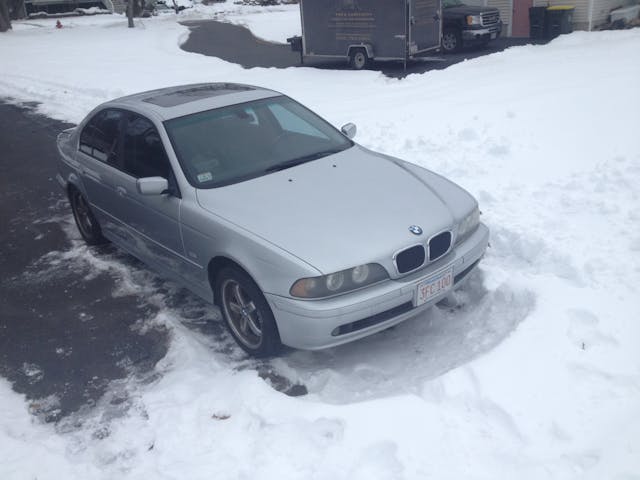
Pre-OBD-II but Not Yet Vintage Cars: There’s a roughly 20-year period between the last of the simple pre-emission-control carbureted cars and the rollout of standardized onboard diagnostics. The so-called OBD-II system on every car sold in America since 1996 allows you or a mechanic to plug in a universal code reader, providing quick and easy diagnostic reporting of many engine management components. Yeah, it’s more complicated than that, as there’s a distinction between the federally-mandated universal emissions-related codes and the manufacturer-specific ones, but still, plug-in diagnostics are a good thing, as the amount of electronics and sensors in cars has increased dramatically over the years, and getting a code that your air-flow sensor is bad is generally quicker and easier than trying to test individual components. The not-so-good thing is that OBD-II has created a generation of mechanics who can’t troubleshoot without plugging in a scan tool. Some cars of this in-between era have an arcane magic-decoder-ring-like system where you turn the key to ignition, mash the gas pedal a specific number of times, count the flashes of a small indicator light on the dash, and look the result up in a table, but the average repair shop certainly isn’t going to know about it. So if you own a fuel-injected car built between the mid-1970s and 1995, and it sputters and dies on a road trip, and the problem isn’t the fuel pump, and there’s not a known repair shop that specializes in that marque within easy towing distance, you may have trouble getting it repaired on the road.
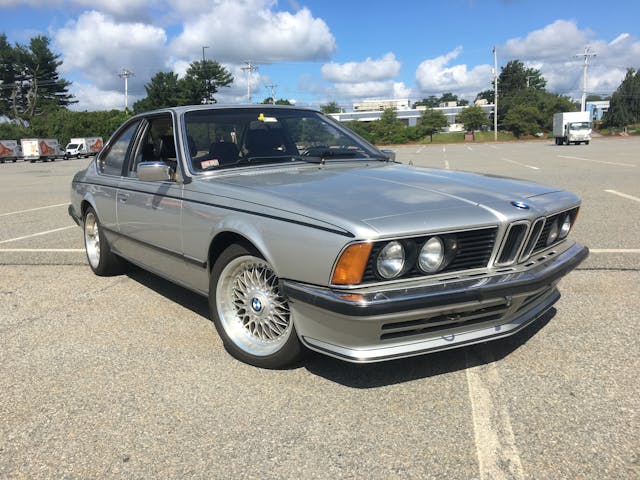
Vintage Cars: For the sake of this discussion, I’ll define “vintage cars” as anything carbureted. Obviously the big appeal of classics is the design aesthetic of the unique shapes of pre-wind-tunnel cars before aerodynamics forced them to all look alike, as well as the attractiveness of small chrome bumpers before the D.O.T. instituted 5-mph impact standards, the period-correct interiors, and the utter simplicity of pre-smog engines—where if the car sputters to a halt, you can easily diagnose the problem as gas or spark, and likely repair it in a few minutes if you have a screwdriver, a spare set of points, a condenser, and a fuel pump in your trunk.
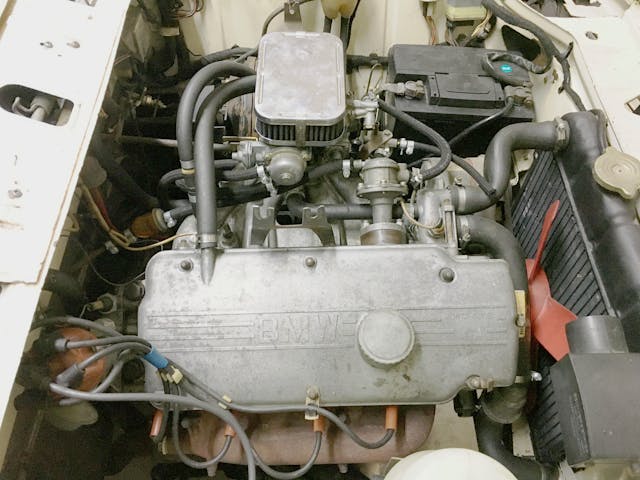
But the downsides of daily-driving a vintage car are substantial. Last year I wrote a piece about the pros and cons of daily-driving a classic. I may proselytize about “The Big Seven,” but on a 50-year-old car, other things can happen. Head gaskets can blow, brake calipers can seize, wheel and driveshaft bearings can begin howling, and on and on. These generally are acceptable risks when you’re pleasure driving the car on weekends or taking it on its twice-yearly road trip to events, but when you subject an old car to all the vagaries of daily-driven life, make no mistake, you’re using it as a consumable, and it will eventually require a body and mechanical refresh.
It’s your car, and you should drive it however you want, but there are certain realities that simply can’t be avoided. If you live in a snowy climate, particularly one where they salt the roads, the car is going to rust quicker than you can say dreikugelförmige brennkammer. Driving it regularly in the rain is likely to rust it as well. Parking it on city streets will likely render it unrecognizable in a matter of months due to dents and vandalism. And there’s no getting around the fact that it’s 50 years old. Wind noise and climate control in vintage cars, even rejuvenated ones, is typically much worse than even a 200K-mile 20-year-old car. The same can be said about creaks, rattles, thunks, clunks, and groans from the body and interior. And the combination of cold-weather starting and warm-up, drivability, power, and fuel economy usually can’t hold a candle to a modern fuel-injected car. Even if you live someplace temperate, it takes a special bond between owner and car to genuinely enjoy daily-driving a classic—commuting, trips, everything—over a span of time.
The safety side of dailying a classic is a complicated issue. Personally, I think that short of playing dodgeball with trucks by driving an 800-pound microcar at 40 mph on interstates, binary labels like “safe” or “unsafe” are misleading, and instead it’s a continuum of shades of gray. Most cars didn’t receive engineered crumple zones until about the mid-’90s, but that’s not going to keep me from road-tripping my 1970s-era BMWs. However, I’d never drive without seat belts and integrated shoulder harnesses. Regarding airbags, despite the popular “No airbag, we die like real men” bumper stickers, steering-column airbags were originally designed to protect unbelted passengers, so I don’t think it’s suicidal to drive a non-airbag car provided you’re properly belted. I’ve relaxed my opinions about non-ABS cars, as the fact that the main advantage of ABS is you can steer while your foot is planted on the brake pedal is most applicable in slick conditions, and I usually keep my vintage cars out of them. However, when it does rain, the combination of the lack of ABS, traction control, and a modern multilink suspension, along with an old, pitted windshield and wipers that move at the speed of a sloth, can make driving a vintage car pretty harrowing, particularly in stop-and-go highway traffic.
So, yeah, I drove my sister’s Civic when I wanted an uneventful 500-mile round trip from Boston to Long Island. I drive my 1970s BMWs when I want an eventful 2000-mile round trip to the vintage car festivals I attend on the East Coast. I can live with the dichotomy and the shame.
***
Check out the Hagerty Media homepage so you don’t miss a single story, or better yet, bookmark it. To get our best stories delivered right to your inbox, subscribe to our newsletters.


What, none of Mr. Hack Mechanic’s fleet of cars will make the trip?
– DUB6, registered member of the Peanut Gallery
You KNEW it was coming, Rob…😏
Usually he has a fit repairing the BMW’s not driving a Fit…
Ba dum tish!
Excellent!
The wife and I went away on a business trip for more than a week so we asked the my mother to come and watch them for the week. Four vehicles on my insurance, we took one to the airport, leaving three at the hosue. I made sure she had my grandmother’s car to drive. Why? Because it’s the only one that doesn’t require “special” instructions. Watch out for this, listen for that, jiggle this, etc. That and from experience I know that my mother will “mark” a car while she is here.
Did anyone listen to my instruction of “Just drive Gram’s Pontiac Vibe”?. Of course not. My son wanted them to take his K10 to somewhere they were going. Because she is unfamiliar with it, and he was just happy to be showing it off, they ended up driving across town and back with 4wd engaged in an old K10. Now I have u-joints to fix.
And for the third year in a row, my grandmother’s car has another corner scuffed from something she backed into without noticing. Next year I’m sure she will get the last clean corner.
I have two ‘vintage’ by your standard, two pre-OBD, and one that is probably pushing well used (100K 2012 1 Series). The 1 Series is in the mix for long distance travel.
With that said, my pre-OBD (200K+ mile) truck regularly makes trips over 100 miles, and my 65 Impala (if I ever get it done) is intended for routine hiway use (front discs and 4 speed auto already installed). My vintage vette burns way too much gas, and my pre-OBD Allante has a number of unobtanium parts, so I keep them close to home. I’m not afraid to drive anything old far. If you keep running them, and keep after them, you get a pretty good idea of what they are and aren’t capable of
Agree (to a great extent), TG. The only thing that really concerns me on a long jaunt in an older (and by that I mean 50+ years) vehicle is something that most routine maintenance and inspections might miss: metal failure in a critical part. Older metal parts, having been subjected to hundreds of thousands of miles can and do suffer fatigue and failure. Some of those things can be replaced with newer parts (like suspension and steering) and that might lessen the chances. Of course, the quality of MODERN metal parts may actually be as – if not more – suspect, so whaddayagonnado?
Having said that, fatal failure of something is pretty far down on the probability list, so I’m totally in sync with the “take care of it and drive it” philosophy!
Rob it the smiles per mile you get driving a vintage car to a meet. Granted you would not want to take a questionable 50 year old 2002 to NYC and break down so taking a Honda was a wise choice. But you should not be worried about taking your cars out on say a trip to Ohio or Georgia if you can get there with out going through NYC. We took our Fleetwood Talisman from FL to WIS and had a great trip. Well except the power seat adjuster froze on the drivers side so my husband had to do all the driving. After we got back I plugged it back in and it started working again, so really a great trip.
Nicely played!
I have enjoyed your stories for many years Rob. My journey with them also began in Ma. where I was born and raised and cut my teeth on 02’s first detailing them in 1969 at the age 13 when they were new off the boat from Hoffman at Foreign Engine Company in Everett,where my dad worked as a saleman for his friend Guido Mondello. My newest car now,is an 02 525IT with my back up is a 96 318ti with an s52 swap and of course,a 72tii I have owned off and on since 1979 undergoing a down to the tub re-awakening,+ 3 other 02’s in various stages of life…I honestly would not want anything newer then what I have simply because I wouldn’t want all the technology which for the most part to me means too many things to fail down the road and not wanting to have to invest in the equipment neccessary just to work with them as they have become….which I see through my nephew’s eye’s working as a tech at a BMW dealer where he has worked at the dealer level since he left my shop is 1999…I like you it would seem,is happy where I am with what I have…Hope to see your stories going until my time on this planet pass’..Carry on….;-)
Sorry Rob but the 2014 Honda Fit has a timing chain and not a belt.
Whoops!
A HOnda Fit has a timing chain, not a belt. Ours has 166,000 and is just fine.
Whoops a second time!
It’s OK Rob. My trusty daily driver, a 2012 BMW X5 has nearly 97K miles and I had it in the shop to replace the belt tensioner. First real repair it has needed aside from the known occasional need to replace the leaky valve cover gasket.
I briefly considered replacing the tensioner myself, but thought better and had a trusted local shop do it.
I was fearing what the timing belt replacement would cost me, until they informed me that the X5 has a chain. I was ecstatic and plan on driving the old girl a bit longer.
“The Big Seven”? I guess “The Big Six” was amended after your clutch hydraulic issues on Louie? 😁
That is correct!
https://www.hagerty.com/media/maintenance-and-tech/problems-that-can-sideline-your-classic/
My 75 FJ40, my daily driver, runs and runs for years without a lick of maintenance other than oil changes and lube jobs. Granted, the interstate is a scary experience, but if I were to head south to Tierra Del Fuego, it would be my first choice.
“And there’s no getting around the fact that it’s 50 years old. Wind noise and climate control in vintage cars, even rejuvenated ones, is typically much worse than even a 200K-mile 20-year-old car.”
Especially when that 50 year old (actually 53 now, soon 54) is an air cooled (VW Karmann Ghia) convertible.
Like many, I’m in the camp of buy-it-used-so-the first-guy-takes-the-depreciation-hit. We (Hagerty readers) are fortunate that we can do most of our own work on the cars, saving a ton of money in the bargain. The daily is a 31 YO Acura, which has been dead reliable. Though the Supra (3rd gen) is reliable also, I hesitate to leave it unattended even though it’s only daily driver quality. The Acura – though it would be unfortunate to lose – i’m not as worried about, as few folks really have an interest in “borrowing” a 4-door, FWD, brown-hued, 5-cylinder sedan. Parts availability is becoming more of an issue as it ages, partly due to only having been in production for 3 years, and its lack of popular appeal. (I sure wish Pick-N-Pull wouldn’t crush their cars after only 30 days in the yard.)
Believe it or not, in some cases, the new vehicles cost less to purchase than a slightly used 2 year old car these days…thanks to supply chain issues, not much of a depreciation hit anymore.
We have a 10 year old VW Beetle TDI that I would get in tomorrow and drive to Florida from up here near Toronto, Ontario. It’s all about taking proper care of our cars and a valid CAA/AAA membership!
And I know I am late to the party but I still don’t think you should have sold the truck Rob.
There, I said it;)
Rob, is dreikugelförmige brennkammer German for “It’s got a Hemi!” ??? As always, thanks for your ongoing thoughts on keeping old iron on the road!
I was hoping someone would look that up. Yeah, pretty much :^)
FYI, Rob, and the ever ubiquitous DUB6, the term “peanut gallery” is considered racist and shouldn’t be used anymore. Similar to how a “master bedroom” is now called a primary. If you don’t get it, look it up. If you disagree, kindly refrain from posting on a public forum.
Do you think the Master Lock Company knows this….
Doubt they care. There are multiple ways to use the word “master” that are not all in relation to slavery. Metallica’s “Master of Puppets” comes to mind.
Well, I had no idea (and I’m not typically in the habit of looking up every phrase or word that I might use to see if it’s okay), but I’m sure I can speak for myself and probably Rob that our use was derived more from the old Howdy Dowdy Show than from the late 1800’s demeaning useage. However, I appreciate the opportunity to learn something whenever possible!
Howdy Doodie is before my time; I’m in my 50’s and often feel like the young whippersnapper on here. I’ll try to stay off your lawn. I do recall growing up in a (still mostly) segregated small town in Appalachian North Carolina that had a single movie theater. It had a balcony that was allocated for the people who were the so-called “peanut gallery”. My family was friends with the owner of the theater and it was not segregated in my lifetime. But I learned the meaning and the origin first-hand.
What is the correct term for a master cylinder or slave cylinder now?
Perhaps you can be the one to figure that out. Master/slave are also used in electrical wiring of a primary circuit with a secondary attached to it. Wait, hmmmm. Primary/secondary?? I dunno. It’s a toughy.
Wow, after a long day of work I click on a cool Hagerty article eloquently penned by Rob and I have to read about him being scolded for failing to be hyper-sensitive about language nuances. Hopefully I used appropriate pronouns. This is exhausting. Incidentally, I am in the process of having a house built and the term “master bedroom” is still in use. I was hoping we could get past that in 2023.
Kindly refrain from posting on a public forum if we disagree? That’s absurd. Almost as absurd as the first part of your comment.
Folks, please don’t jump on Verdigris. I’m fully in support on erring on the side of language that is free of racist overtones. However, Verdigris, I’d prefer to converse about this outside this forum. You can find my contact information on my website.
In the title of the article, Rob described some cars as being “used” cars. Is that an appropriate word, or is he missing some hidden meaning that will offend someone?
I buy well used (broken in for a Toyota) 150k miles, 250k km 10-15 year old Toyotas for my daily. My current ’04 Solara that I bought in 2017 is up to 587k km. Everything still works. Including repairs (struts, axles, motor mounts, timing belts, etc), excluding maintenance (oil changes, brakes, tires), it has cost me around $100/month to buy and repair. Took my ’84 Celica to check it out – 275km each way – In February.
I’ll probably be looking for a replacement in a couple of years but sellers want the same money for the same car 6 years later.